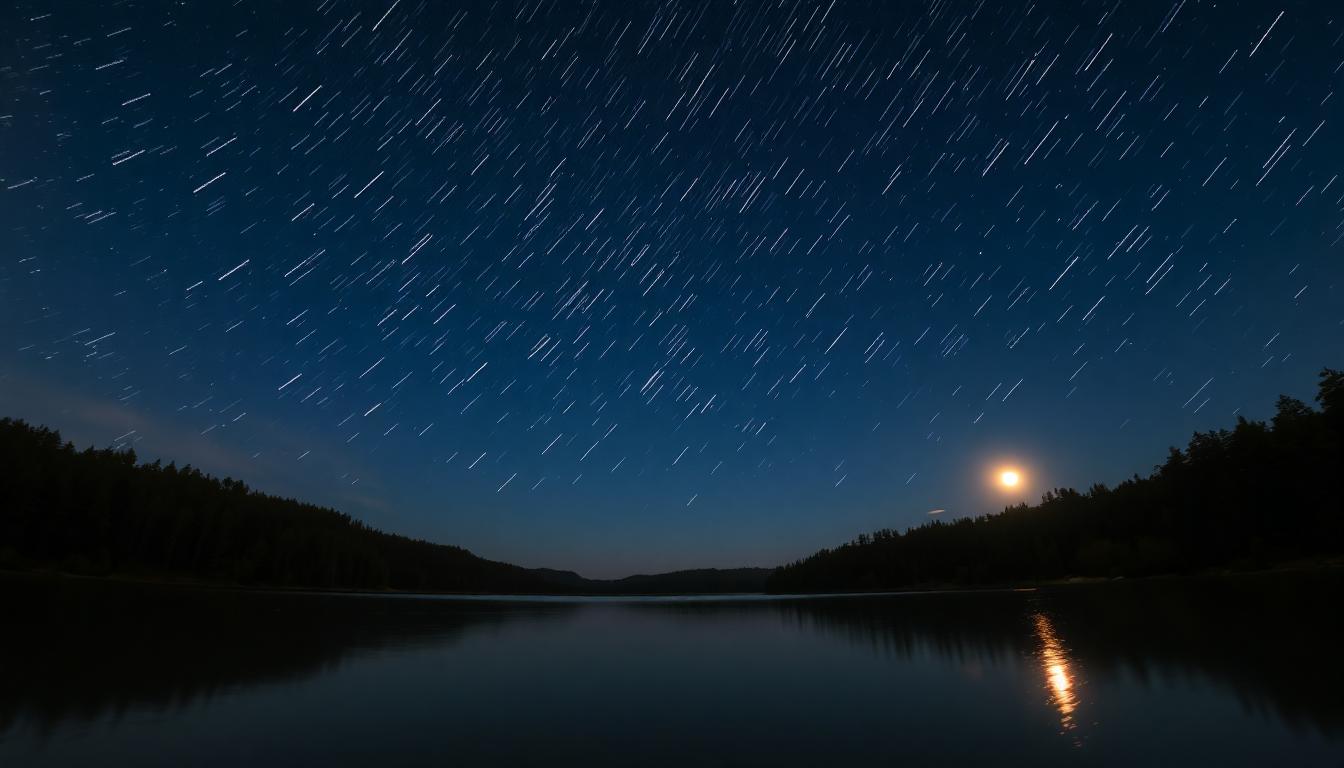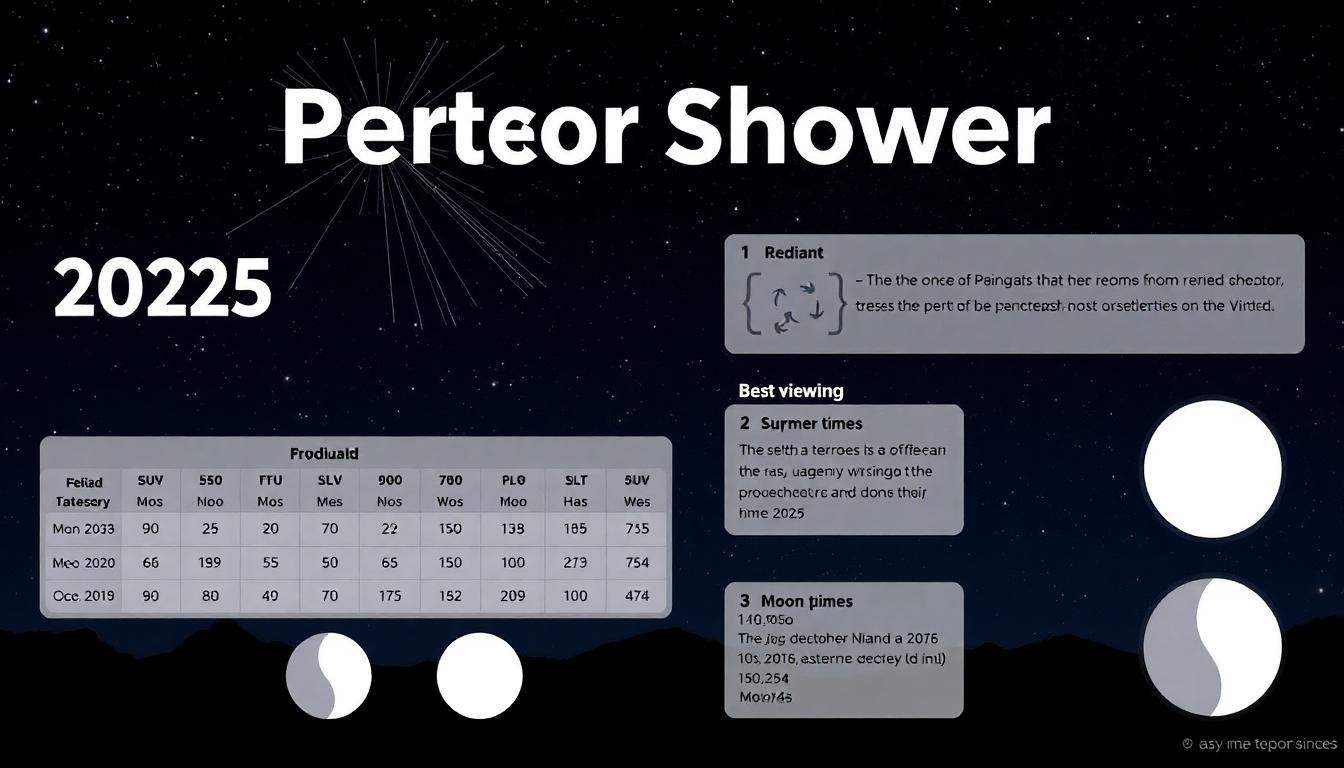Each summer, the Perseid meteor shower brings thousands of people outdoors, eager for a glimpse of spectacular shooting stars. 2025 is no exception—astronomers and casual skywatchers alike are anticipating the Perseids will peak on the night of August 12 into the morning of August 13. Despite a bright Moon, there’s still plenty to see, and this event can be magical for anyone willing to spend some time under the night sky.
What Are the Perseids?
The Perseid meteor shower is caused by Earth passing through the dusty debris left by Comet Swift-Tuttle. That debris consists mostly of sand-sized particles which strike our atmosphere at 37 miles per second—enough to produce rapid bursts of light as the air ahead of each grain glows and vaporizes. These glowing trails are what we call “meteors.”
Most Perseids burn up about 60–70 miles above the ground, never reaching Earth’s surface. Occasionally, a larger fragment creates a fireball: a meteor so bright it can outshine Venus, the third-brightest object in the night sky.
When Is the 2025 Peak?
The Perseids are active from mid-July to late August, but this year’s peak occurs on the night of August 12 and before dawn on August 13. During the peak, up to 100 meteors per hour might be possible under perfect conditions, but 2025 brings a challenge: a waning gibbous Moon, about 80% illuminated, rises before midnight and washes out many faint meteors.
Even so, the Perseids are famous for producing fireballs—bright meteors that punch through moonlight, delighting even with challenging sky conditions. For best results, view during the darkest hours between midnight and dawn, especially after the Moon has set or is low in the sky.
Where (and How) to Watch
- Location: Get as far from city lights as you can; rural spots or even city parks with open skies work best. The fewer the lights, the more meteors you’ll catch!
- Direction: The radiant—the spot where Perseids appear to shoot from—lies in the constellation Perseus, low in the northeast after dusk and climbing higher into the night. But meteors will streak all over the sky.
- Preparation: Bring a blanket or reclining chair, snacks, warm clothes (even in August), and mosquito repellent. Patience is key; eyes need at least 30 minutes to adapt fully to darkness.

Reflections on lakes, rivers, or even paddling pools can add a peaceful dimension to your meteor-watching night. The best views are away from urban glow, in parks, by the shore, or even in backyards with an open sky view.
What Will You See?
With the Moon interfering, rates may drop to around 10–20 meteors per hour. Still, the Perseids produce more bright events than most showers, and catching a fireball—often leaving glowing trails that last a second or two—feels like witnessing a small miracle.
Watch for:
- Fireballs: Brighter-than-average meteors, sometimes with color or persistent trails
- Long streaks: Meteors that travel a large part of the sky before fading out
- Random “earthgrazers”: Early evening meteors that skim the upper atmosphere, sometimes moving slowly and low along the horizon
Simple Viewing Tips for All Ages
- Be patient: Lay back, relax, and watch as wide an area of sky as possible.
- Block the Moon: Stand so buildings, trees, or even your hand shield your view from direct moonlight.
- Let your eyes adjust: Avoid looking at phone or tablet screens for at least 30 minutes before and during your session. Use red light settings if you need to see.
Astrophotography: Capturing the Show
- Use a tripod and wide-angle lens.
- Try settings: ISO 1600-3200, 15-25 second exposures, and manual focus at infinity.
- Point northeast: But keep much of the sky in the frame.
- Take many shots: Meteors are unpredictable!
- Remote shutter helps: Avoids camera shake.
Astrophotography isn’t just for experts. Even beginners can catch meteors—sometimes by accident—using a phone on a stable surface or with a simple tripod.
The Science: Why Meteors Shine (and Survive)
As each meteoroid enters Earth’s atmosphere, friction heats it above 3,000°F (1,650°C), causing it to glow. The Perseids’ parent, Comet Swift-Tuttle, has a 16-mile-wide nucleus, making it one of the largest comets to cross Earth’s orbit. Its last close visit was in 1992, with another not due until 2126. Every year, Earth’s trip through the comet’s dusty wake brings the Perseids right to our skies.

Perseids FAQ
What if it’s cloudy?
Try the next night! While the peak is best, Perseids are active for days before and after.
Can I see them from the city?
Yes, but you’ll see far fewer. Light pollution blocks all but the brightest meteors.
Best for kids?
Absolutely! Bring snacks, blankets, and make a game of counting meteors.
Can I photograph with my phone?
Yes, if you use long exposure apps and a tripod to steady your shot.
Is it worth it with the bright Moon?
Definitely—bright Perseid fireballs often outshine the Moon, and meteor-watching is a timeless summer adventure.
The Big Picture: Why the Perseids Matter
Year after year, the Perseids inspire awe and bring people together outdoors, teaching us about comets, Earth’s place in space, and the beauty of the natural world. Even in a bright moon year like 2025, a few hours under the stars can be truly unforgettable.
Summary:
- Peak night: Aug 12–13, best after midnight
- Look northeast, but meteors may cross anywhere
- Expect 10–20 meteors/hour, mostly bright ones
- Prepare with patience, comfy gear, and a sense of wonder
To contact us click Here .







